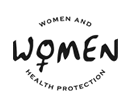FOR IMMEDIATE RELEASE
May 11, 2000
Illegal ads for prescription drugs are misleading Canadian women, group charges
MONTREAL: An upsurge in illegal advertisements is misleading Canadian women, said Carla Marcelis, spokesperson for a coalition of women's health advocates. Although direct-to-consumer advertising of prescription drugs is illegal in Canada, ad campaigns are now running in print and electronic media across the country.
The Working Group on Women and Health represents over twenty women's and consumers' groups across Canada including the Canadian Women's Health Network, DES Action Canada and the Women's Health Clinic in Winnipeg.
One misleading advertisement pitched to Canadian women promotes a potent hormonal medication as a treatment for acne.
"The illegal ads for Diane 35 are appearing on billboards across the country," Marcelis told reporters in Montreal this morning. "Young women have no idea that this treatment is associated with serious health risks."
Marcelis said her group had complained to the Ministry of Health six months ago, without results. She also distributed information from the World Health Organization about safety concerns over Diane 35. "We're concerned about the explosion of ads that misrepresent the benefits and understate the risks of medications," she said.
BACKGROUNDER on Direct to Consumer Advertising is available at the website of the Working Group on Women and Health Protection and at the website of the Canadian Women's Health Network.
HIGHLIGHTS
- Since regulations on direct-to-consumer advertising were loosened in the United States in 1997, American women have been bombarded with ads for estrogen therapies for menopause, bisphosphates to prevent osteoporosis, and classes of drugs in which over-prescribing to women has been identified as a problem, such as tranquillisers and antidepressants.
- Although DTCA advertising is illegal in Canada, Canadian women are frequently exposed to the same ads when they access American media through unregulated t.v. or radio, or when they buy American magazines. Women tend to be seen as a choice target for pharmaceutical advertising because they often function as primary care providers in the home, and will purchase a wide range of drugs used by all family members.
- The advertising of prescription drugs inflates health care expenses. If the pharmaceutical industry is successful in advertising its drugs to the public, more visits to the doctor will result. More people will use prescription drugs, and more prescriptions will be written per patient. The massive growth in American spending on DTC advertising, from US $55 million in 1991 to more than US $1.8 billion last year, indicates that this form of advertising is likely to be paying off for the advertisers. But at what cost to the public, and to the public health care system?
Copyright ©2006-2010 Women and Health Protection
Supported by the Women's Health Contribution Program,
administered by the Gender and Health Unit of Health Canada.
In partnership with The Canadian Women's Health Network.

